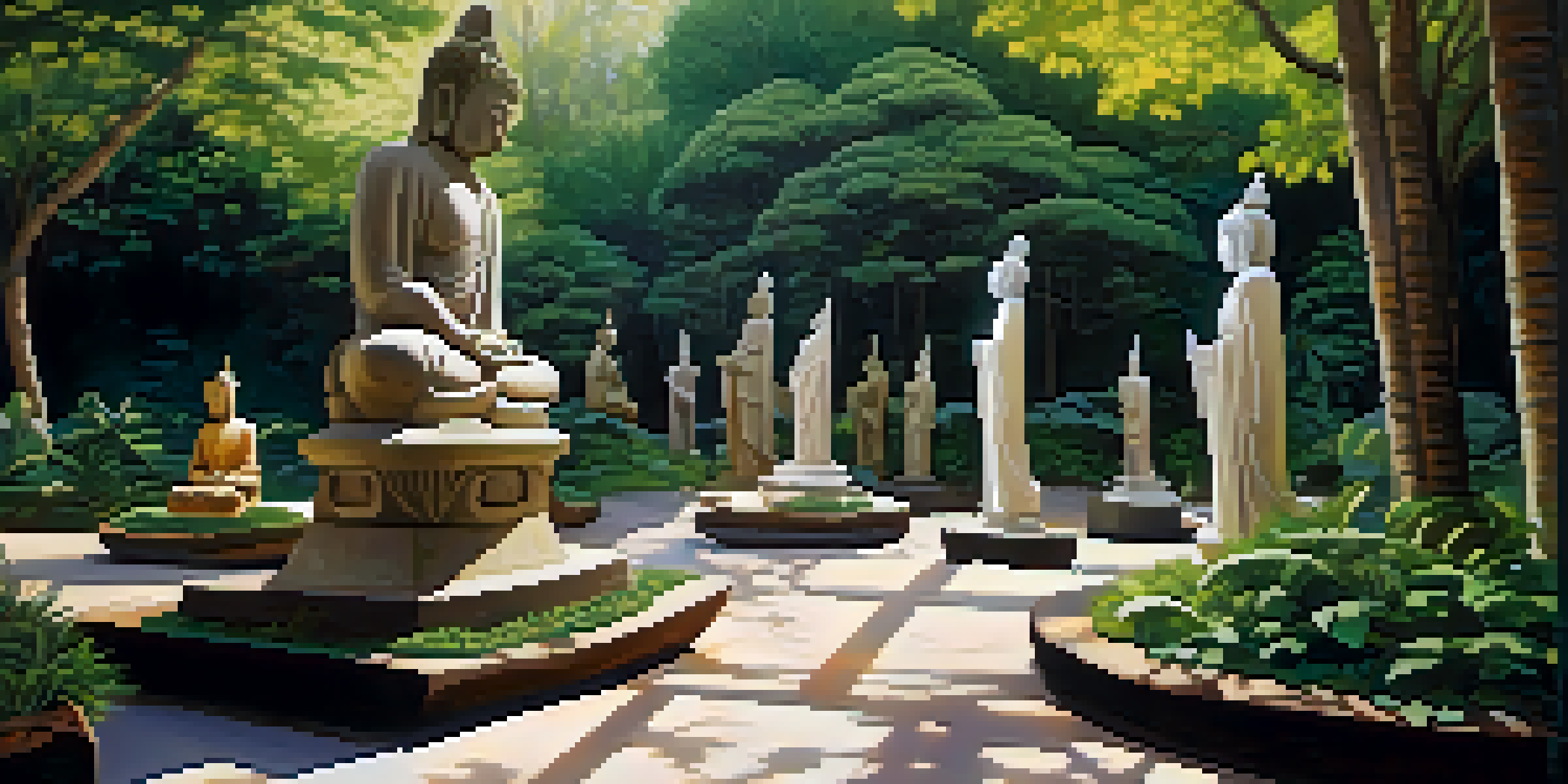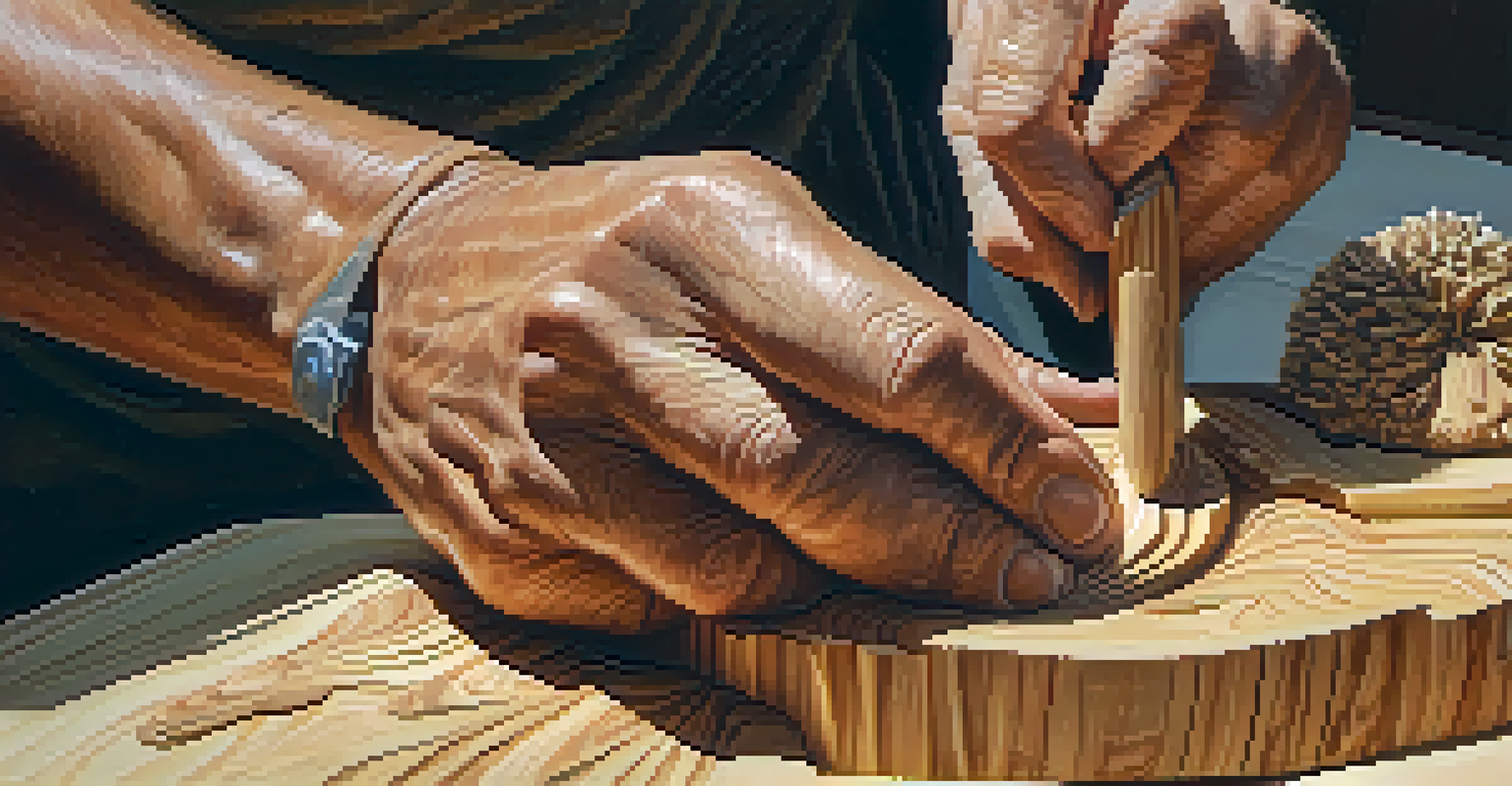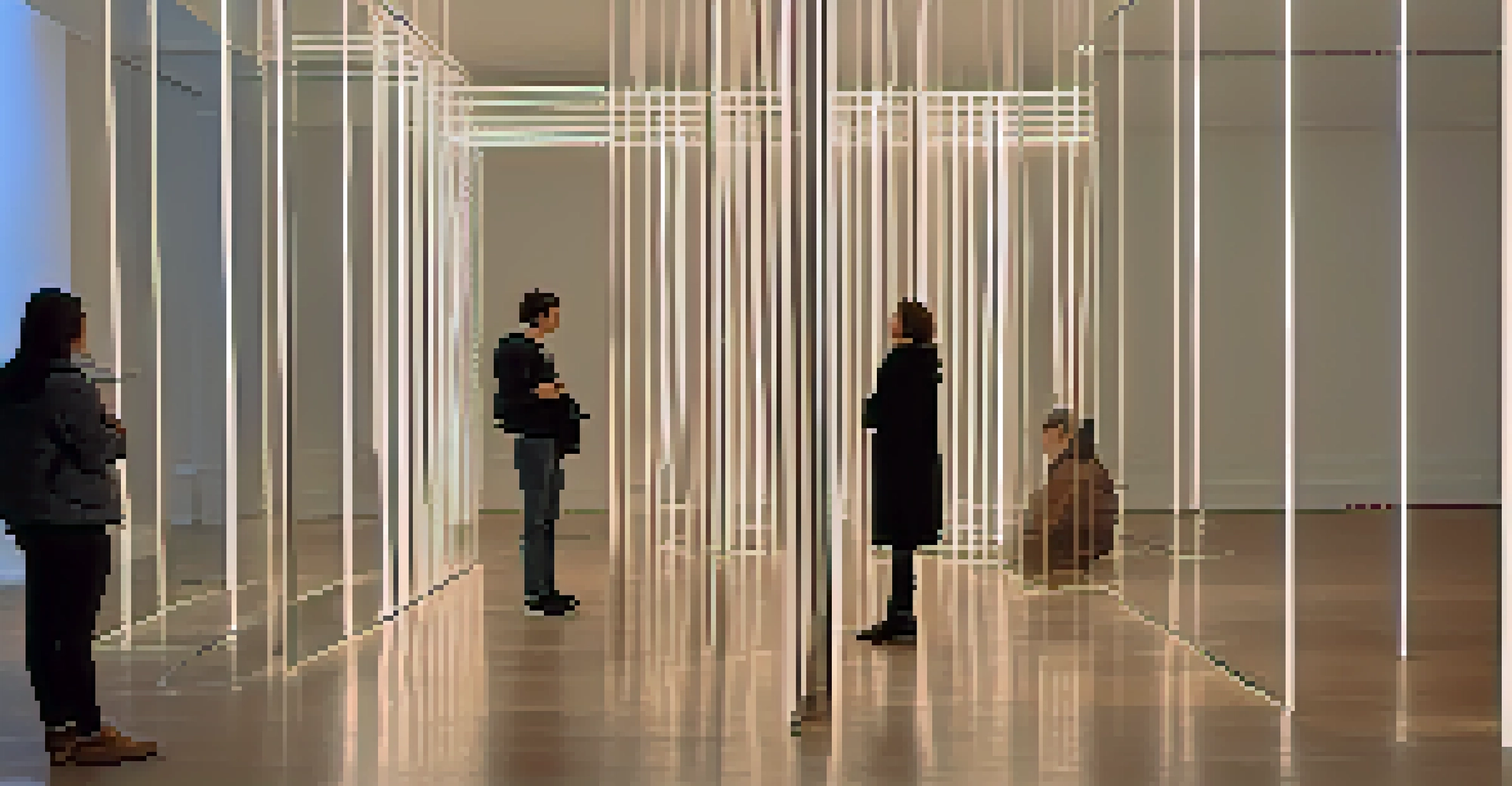Sculpture and Its Role in Representing Spiritual Beliefs

The Intersection of Art and Spirituality in Sculpture
Sculpture has long served as a bridge between the material and the spiritual. Artists use various materials to carve out representations of deities, spiritual symbols, or scenes from sacred texts. These three-dimensional works invite viewers to connect deeply with spiritual narratives, making abstract beliefs tangible and relatable.
Art is the most beautiful of all lies; it is a reflection of the soul's deepest yearnings.
For instance, ancient Egyptian sculptures were not merely decorative; they were integral to the culture's spiritual practices. Statues of gods and pharaohs were believed to host divine energy, serving as a focal point for worship and rituals. This illustrates how sculpture can encapsulate and communicate complex spiritual concepts.
Moreover, in many cultures, the act of sculpting itself is seen as a spiritual endeavor. Artists often enter a meditative state while creating, believing that their work channels higher powers. This transformative process underscores the profound relationship between creativity and spirituality.
Historical Perspectives: Sculpture in Ancient Religions
Throughout history, sculptures have played a pivotal role in ancient religions. From the intricate carvings in Hindu temples to the imposing statues of Greek gods, these artworks provided insight into the societies' spiritual beliefs. They often depicted myths, rituals, and moral lessons, serving as educational tools for the community.

Take the famous Moai statues of Easter Island, for example. These massive stone figures were believed to embody the spirits of ancestors, highlighting the importance of lineage and spiritual connection in Rapa Nui culture. Such monuments not only reflect religious beliefs but also showcase the community's values and aspirations.
Sculpture Bridges Art and Spirituality
Sculpture serves as a powerful medium that connects material representations with spiritual narratives, inviting viewers to explore deeper meanings.
The enduring nature of these sculptures speaks to their significance over time. Many ancient sculptures have survived the test of time, continuing to inform modern understanding of spirituality and culture. These artifacts remind us that art is a powerful medium for preserving and communicating spiritual beliefs.
Modern Sculpture: A Reflection of Contemporary Spirituality
As society evolves, so too does the role of sculpture in representing spirituality. Modern artists often explore themes of identity, mental health, and the human experience, intertwining these issues with spiritual exploration. This shift invites audiences to ponder contemporary beliefs and challenges within the spiritual realm.
Sculpture is the art of the intelligence.
For example, artist Anish Kapoor's work often evokes a sense of the sublime, encouraging viewers to reflect on their existence and the universe. His sculptures, characterized by their reflective surfaces and organic forms, prompt an introspective journey that resonates with many seeking spiritual meaning today.
This evolution illustrates that while the subjects may differ, the purpose of sculpture remains constant: to provoke thought, inspire, and connect us to something greater than ourselves. As we navigate our complex modern lives, sculptures continue to serve as important portals to spiritual exploration.
Cultural Significance: Sculpture in Various Religions
Each religion has its unique sculptural traditions that reflect its spiritual beliefs. In Buddhism, for instance, statues of the Buddha are not only representations but also tools for meditation and reflection. Devotees often turn to these figures for guidance and inspiration on their spiritual journeys.
Similarly, in Christianity, sculptures of saints and biblical figures serve as reminders of faith and moral values. These works often adorn churches, inviting worshippers to connect emotionally and spiritually with the narratives they depict. The artistry involved also enhances the sacred space, making it more inviting for contemplation.
Cultural Significance in Spirituality
Different religions employ unique sculptural traditions that reflect their spiritual beliefs, enhancing the emotional experience of worship and meditation.
Even within indigenous cultures, sculpture holds profound spiritual significance. Carved totems, for example, represent ancestors, animals, and spiritual beliefs, acting as a visual language that communicates the community's heritage. This diversity in sculptural expression highlights the universal need for art to convey spiritual beliefs across cultures.
The Process of Creating Spiritual Sculptures
The creation of spiritual sculptures often involves more than just technical skill; it is a deeply personal and spiritual process for many artists. Many sculptors engage in rituals or meditative practices before starting their work, seeking inspiration or guidance from higher powers. This sets the tone for a creation that is not just artistic but sacred.
Materials also play a vital role in this process. Different cultures attribute spiritual significance to various substances, such as stone, wood, or metal. For example, in many indigenous cultures, the act of using natural materials connects the artist to their ancestors and the earth, further embedding spiritual meaning into the sculpture.
Ultimately, the intention behind the work shapes its spiritual resonance. When artists create with purpose and a sense of connection to something greater, the resulting sculptures often evoke strong emotional responses from viewers, facilitating a deeper exploration of spirituality.
Sculpture as a Medium for Spiritual Dialogue
Sculptures often serve as conversation starters about spirituality, inviting viewers to reflect on their beliefs and experiences. When encountering a sculpture, individuals may find themselves questioning their own understanding of spirituality and existence. This dialogue can lead to personal revelations and a deeper connection with their beliefs.
For instance, contemporary installations that challenge traditional notions of spirituality can provoke thought and discussion. Artists like Olafur Eliasson create immersive environments that encourage viewers to engage with their surroundings and question their place in the universe, bridging the gap between art, spirituality, and everyday life.
Future Trends in Spiritual Sculpture
As technology evolves, new forms of sculpture will emerge, blending digital innovation with spiritual exploration to engage broader audiences.
In this way, sculpture becomes more than an object of beauty; it transforms into a vessel for spiritual exploration and community dialogue. The conversations that arise from these encounters can foster a greater understanding of diverse spiritual perspectives, enriching the collective spiritual landscape.
The Future of Sculpture in Spiritual Expression
As we move further into the 21st century, the role of sculpture in representing spiritual beliefs will likely continue to evolve. With advancements in technology and shifts in societal values, new forms of sculpture may emerge, reflecting contemporary spiritual inquiries. This adaptability ensures that sculpture remains relevant in a rapidly changing world.
For example, digital and interactive sculptures are beginning to blur the lines between technology and spirituality. Artists are exploring virtual reality and augmented reality to create immersive experiences that challenge viewers' perceptions of spirituality and existence. These innovative approaches can reach broader audiences and encourage deeper engagement with spiritual themes.

Ultimately, the future of sculpture as a medium for spiritual expression will depend on the artists' ability to respond to the changing landscape of beliefs and values. By embracing new techniques and ideas, sculptures will continue to inspire and invite reflection on the ever-evolving nature of spirituality.